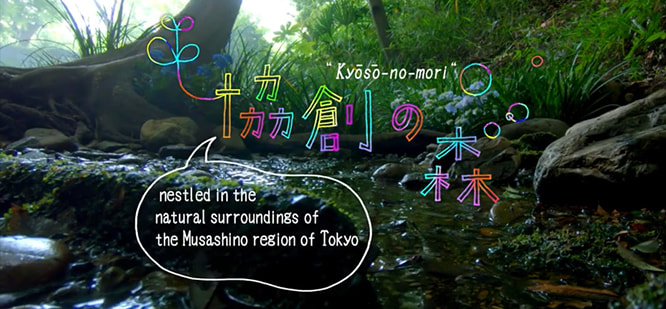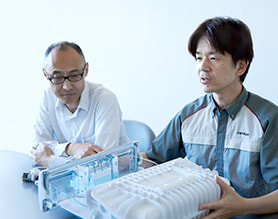Create New Value
Product Development Stories
Side by Side Refrigerator Design
Conscientiously creating products of aesthetic beauty
that harmonise perfectly with people's needs.
Haruna Tako and Kohei Shirai – from the Product Design Department Global Center
for Social Innovation in Tokyo – are the meticulous designers of Hitachi's new Side By Side Refrigerator.
What is the right design for the new Side By Side Refrigerator?
In the new Side By Side Grande series Refrigerator, we created a new unique Polygon pattern design for the exterior glass door and complemented it with a new colour: glass bronze (GBZ).

The new Refrigerator Side by Side Grande Series has been awarded "iF Design Award 2020" in Berlin, Germany on February 4th, 2020.Learn more
As for the interior, a new aesthetic design was created for the new "Vacuum Compartment", which preserves food freshness and retains nutrients. The refrigerator's water tank was also redesigned and repositioned next to the "Vacuum Compartment". With the aim of creating a quality feel appropriate for a premium level product – we incorporated the aluminium panel at the top rear of the refrigerator compartment.
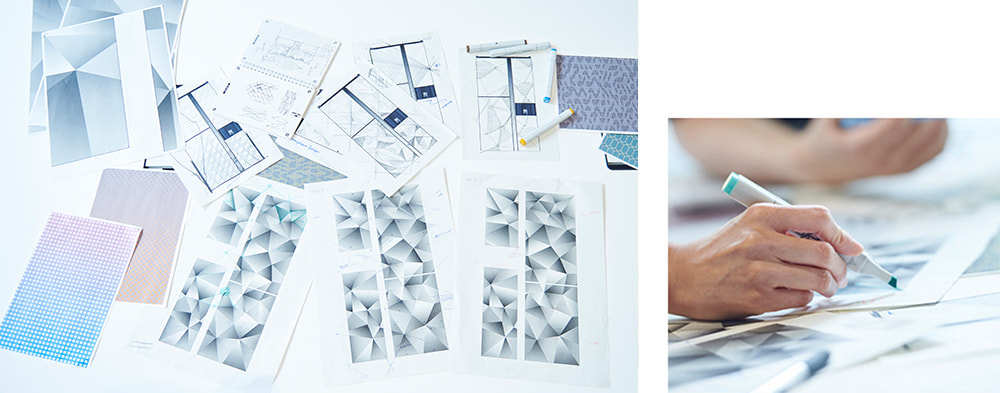
During the design process of this new refrigerator, the most important criteria was to be attentive and thoughtful to people's needs. As we pursued this challenging objective, we took more time and effort to finalise its new design.
In the previous Side By Side Refrigerator, we designed a Diamond (DIA) pattern, and because its outstanding design has been well-received in each market, we decided that we would keep this design concept.
With that in mind, we thought of dozens of design proposals at the sketch level, such as designs that change while still retain the DIA pattern, and designs that looked like textures. Among these ideas, the Polygon design pattern that we finally selected emerged from the concept of printing a polyhedron design on flat glass, as a way to show the product in three dimensions. We felt that we could express new movements and facial expressions by forming irregular elements and cutting away surfaces – like a sculpture. We then screened the design proposals again and printed several proposals on acrylic boards to examine them in actual size. Next, we actually printed them on glass plates and checked the colours, patterns and fine metallic particle details, in particular to see if the sense of size and depth of the Polygon pattern were properly expressed.
We strive to be inspired by ideas not only from market trends, but also from everyday life.
Next, we brought together the internal stakeholders and gathered their opinions over three sample surveys. We then took the samples to sales companies and promoters in various countries to get their viewpoints.
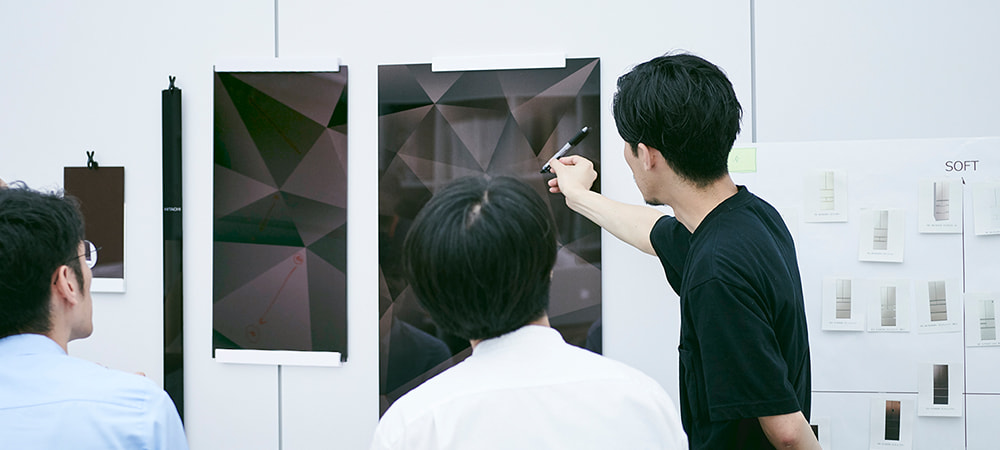
We had new findings by talking in depth and directly with our customers. As we started to develop the new design, we knew that "a pattern that can be clearly seen from a distance" is well accepted, but from the designer's point of view, we were not perfectly convinced if its new glass door design blended in with their interior design. However, when we actually heard the opinions of our customers, many of them told us that the Polygon glass door design was "in harmony with the interior design". Although this was difficult to understand from the designer's point of view, as we dug deeper, we heard common keywords such as "more three-dimensional", "a design with an effect applied", "something that no one else has yet", and discovered that people believed that "something that accentuates difference is in harmony with the interior". Until then, we thought that a design that blended into the surroundings equates to a design that harmonised with the interior. Now that we were presented with a different perspective, we finally completed the Polygon glass door design over six months.
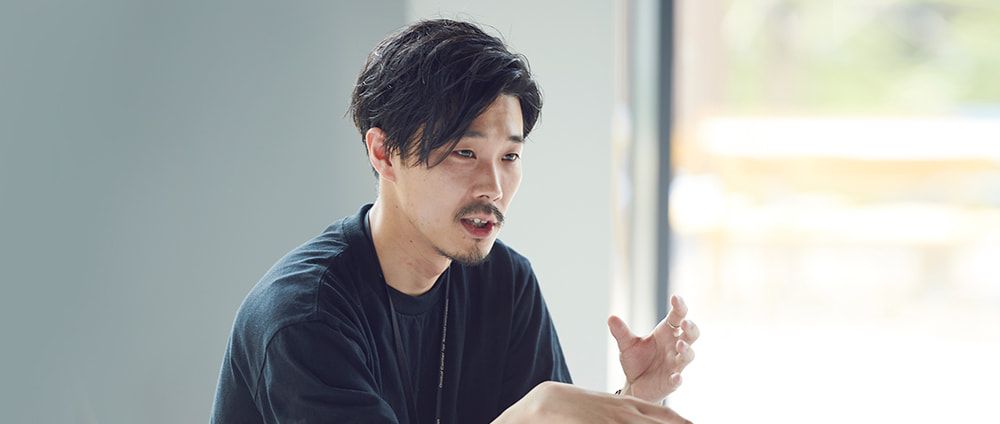
In addition, we also conducted monitor tests with relevant departments in the company to evaluate the ease of use, user-friendliness and functionality in real home settings. We asked users how comfortable they felt using the polygon glass door design in conjunction with the newly-equipped Vacuum Compartment. All this was done in pursuit of the concept of "attentiveness to people".
We actually changed the interior design of the water tank lid. Originally, we proposed a sliding lid, but considering the water tank volume and usability, we changed the design mechanism to allow it to be opened with just a single touch for ease of use.
Listening and understanding the voice of customers is, for us, an intuitive concept and a natural process. Another example of this is how we have been perfecting the handles of the refrigerator doors for the entire design by studying the reach/depth of people's fingernails. This is further evidence of the meticulous detail taken to understand the voice of people as we pursue our objective of "being attentive to your needs".
We strive to be inspired by ideas not only from market trends, but also from everyday life. To learn from everyday life – just by observing things while seeking new information – greatly changes your perspective. We will continue to pursue the question "What is a really good design and product for people?" and curate our products to your needs.
